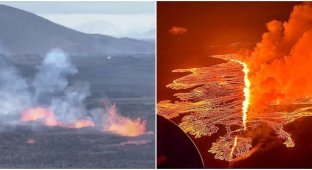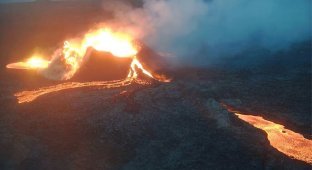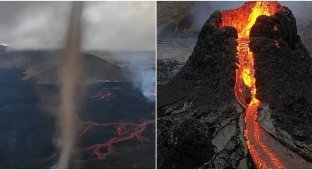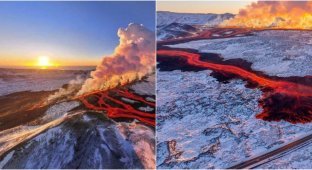From Iceland with love: a sulfur cloud from a volcano approaches Britain and Scandinavia (2 photos + 4 videos)
3 June 2024
In Iceland, on the Reykjanes Peninsula, a volcano with a beautiful name - Sundhnukagigar - began to erupt 5 times a year. 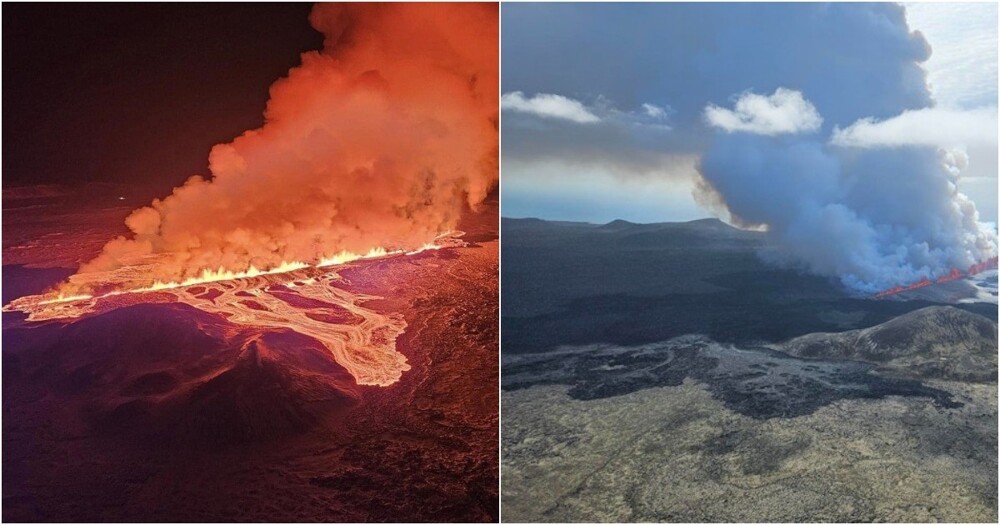
Sundhnukagigar is a series of craters near the town of Grindavik on the Reykjanes Peninsula that erupted in December 2023, February, March and May 2024. They previously erupted more than 2,500 years ago.
Local residents have long been accustomed to this; they reacted melancholy to the latest manifestation of activity. The nearby town of Grandavik, with a population of about 4,000 people, was evacuated.
The area is currently closed to the public and should not be visited until authorities deem it safe to do so. But if you really want to, you can take a helicopter excursion to the area of the active volcano.
The eruption now continues at reduced levels.
Spatter is currently limited to a cluster of approximately six igneous vents within the fissure, above which a group of cinder cones, called spatter ridges, has formed.
The lava flow along the main Grindavikurweg road and protective barriers slowed his progress.
But the residents of Britain and Scandinavia are not delighted with such beauty. A fairly large cloud of SO2 - sulfur oxide - is heading towards them.
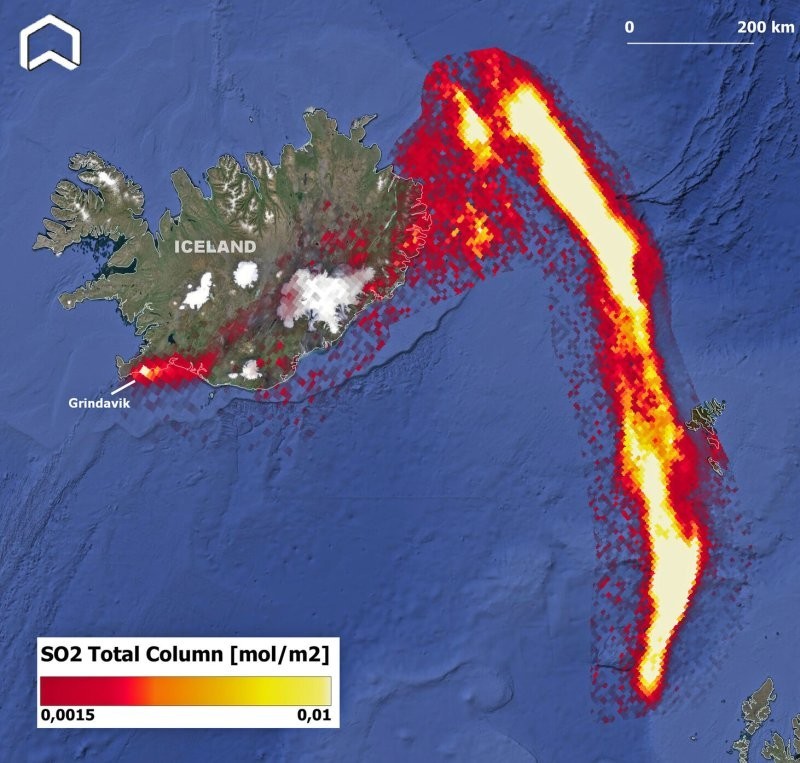
SO2 emissions from the eruption site are moving east (image: ADAM platform)
Volcanoes in Iceland love to poison their neighbors. On March 17, the Reykjanes volcano emitted about 50 kilograms of sulfur dioxide per second, and the wind picked it up and carried it towards northern Europe.
Sulfur dioxide is a chemical compound of sulfur and oxygen that under normal conditions exists as a colorless gas with a pungent odor. In small concentrations, sulfur dioxide can irritate the mucous membranes of the eyes and respiratory tract. At higher concentrations, it can cause difficulty breathing and swallowing, as well as pulmonary edema and nosebleeds. In addition, sulfur dioxide is one of the causes of acid rain.












